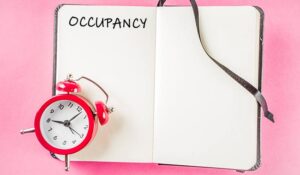We were recently asked…
“Call Centre Helper and other online resources all point to 85%-90% occupancy as being the ideal rate, with some suggesting a wider 80%-90% goal.
Is anybody using a target outside of this range, or have any views on why the rate should/should not fall within this range?”
So we asked the question of our readers and here are all the answers that you need to know:
Occupancy Should Be as Low as the Business Can Afford
Occupancy should be as low as the business can afford.
Thanks to Zak
84% Is the Magic Number
84% is the magic number. Anything below that, you should be concerned…anything over 90% looks good, feels good but you need to probe how and why it’s over 90%.
Thanks to Parag
75%-80% Is the Ideal Rate
75-80 is the ideal rate. Anything above that has resulted in higher attrition and adherence issues. Certainly, an indication of burnout and dropping experience.
Thanks to Abdul
90% Occupancy = Burnout
Occupancy of 90 percent for 8 hrs of shift time means 432 mins your advisors are engaged, which leaves only 48 mins as breather. This depends what kind of average talk time your processes use. This will surely lead to burnout for your employees.
Thanks to Nilesh
90% or More Is Unsustainable in the Long Term
I think 90% would be the top end and unsustainable for long-term positive EX.
Thanks to Glendon
Some Organizations Use 50% – Others Manage 90%
There are many variables to consider, and you shouldn’t just take an “average” as this may be an industry bad habit. There are some really good comments below; however, they all need greater context to use as a benchmark. We see a number of different calculations for occupancy, which some also call utilization. Also, some measure occupancy/utilization against paid hours, some just against customer time (excluding out of office and offline shrinkage factors).
I’ve seen some organizations with occupancy less 50%, (of customer time) which was ideal to suit their strategic objectives and type of work. I’ve also seen those who operate above 90% (of customer time) for prolonged periods, who also have great tenure of staff and low absence. If you use the Erlang add-in formula for Excel, you can calculate the expected utilization % based on the number of people you have and service level aspiration. This is a good starting point to understand your business.
Thanks to Phil
Measure Adherence Not Occupancy
Occupancy is a BPO metric that CFO-managed contact centres cannibalized. Schedule adherence is a better goal for most.
Thanks to Todd
There Is No Definitive Answer to What Occupancy Should Be
Agent occupancy is wholly dependent on two key drivers: a) service level target (the higher the target, the lower your occupancy results) & b) AHT (again the lower the AHT, the lower the occupancy).
I’ve worked with a SL target of 99% in 5 seconds (yes, you’re reading this right!) combined with an AHT of c.60 seconds. Occupancy results were around the 45% mark due to this. Scheduling efficiency was irrelevant as I had a team of schedulers who delivered 95%+.
The moral of the story here is there is no definitive answer to what occupancy should be.
Thanks to Paul
Occupancy Is an Output Not an Input
Occupancy is an output of the staffing decisions you take vs. the demand (considering items such as service level targets, shift pattern restrictions, opening hours, cost per hour of staffing, shrinkage allowances etc.). I can easily ensure a 90%+ occupancy by simply understaffing, or by adding far too much shrinkage. I can also struggle to get above 50% occupancy if staffing a low demand 24/7 phone line, just as examples.
It is part of a whole, something to consider, but goals drive behaviours – be careful what you target and why – ensure they are designed to drive the behaviours you are looking for and service you desire.
Thanks to Robert
Occupancy Can Be Between 70 and 75% for Less Than 100 Agents
Target occupancy is significantly dependent on the number of agents supporting the demand. While larger centres, +200 agents, can operate at 85% occupancy to achieve your typical 80/20 svl, a smaller centre will need a lower occupancy to achieve the same target svl because they have less scalability and need the additional available time between calls to effectively respond to random call arrival patterns. In my experience, centres between 100 and 150 agents work best at around 80%, less than 100 can be between 70 and 75%.
Thanks to Paul
Above 80% Burnout Is Real
75-80 is where I prefer to position; burnout is real.
Thanks to Philip
80-83% Offers Optimum Productivity
I’ve always found that 80-83% offers optimum productivity. It’s also important to use dynamic handling times, though, to reflect the true working day. I see too many flat/static AHTs that then impact wider performance.
Thanks to Jacqueline
Aim for 70% to 80%
Calls will queue but we aim to hit 70/80% as a total for the day/week.
Thanks to Scott
77-80% Was Our Max
I think 90% is too high – causes burnout and attrition. 77-80% was our max.
Thanks to Debby
If You Go High Your AHT Will Increase
I would not go above 85% occupancy. Places that go to 90% occupancy will typically see their AHR increase as advisors get tired and take longer on calls. So, the higher occupancy rates are often hidden in a higher AHT.
But the key thing would be to cross-reference occupancy against quality scores or first contact resolution. I would expect that you would see a correlation that high occupancy drives low quality scores.
Thanks to Jonty
There Is No One Size That Fits All
Having a one-size-fits-all target on occupancy is an egregious error. It is like saying all equations must be equal to 75% to be right, and we know that is not mathematically possible. When you staff your centre to achieve a service level based on volumes and handle times, those variables will be different based on industry, customer experience strategies and customer expectations….then how does one justify trying to force those variables to have the same resulting occupancy? Let us now add to that the complexity of intra-day deviations from the forecast and you begin to understand the absolute horror of setting an arbitrary number for occupancy, because who really came up with that figure in the first place?
Thanks to Marc
Focus on Employee Experience – Not Service Levels
For years, contact centres that focus on service levels rather than employee experience have led to employee burnout, hence very high turnover rates. In today’s economy, this is a huge no-no. Employees, especially agents, need a cherishing environment and employers that focus on engagement, well-being, and motivation. Just look at the Great Resignation year we just experienced.
Thanks to Nurdan
Read these articles next for more valuable insights and suggestions on occupancy:
- How to Calculate Occupancy
- Why Should Your Occupancy Rate NOT Exceed 85%?
- What Is the Difference Between Occupancy and Utilization?
Author: Rachael Trickey
Published On: 17th May 2022 - Last modified: 1st Oct 2025
Read more about - Call Centre Questions, Call Centre Answers, Occupancy





































